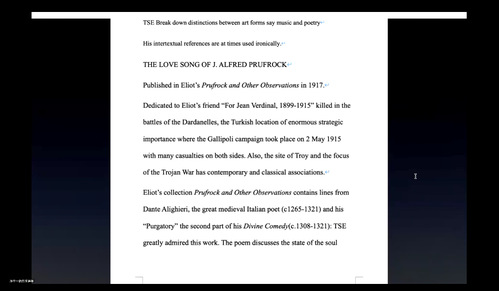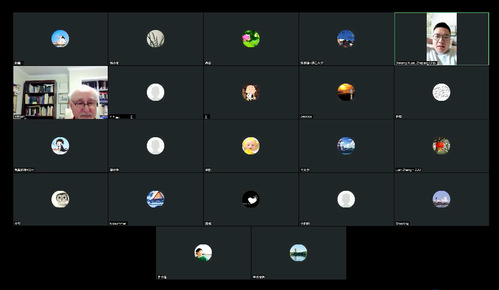On the morning of May 11, 2024, Prof. William Baker delivered a lecture titled “Intertextuality in T. S. Eliot’s Poetry” online, invited by the Center for Modernist Studies, the Institute of Foreign Literature, School of International Studies, Zhejiang University. A senior professor at Northern Illinois University in the United States, Prof. Baker used to be a distinguished professor of overseas original courses of Zhejiang University. He also serves as an international advisor to the Center for Medieval and Renaissance Studies (CMRS) at Zhejiang University. He is a renowned figure in the field with over 30 academic books and more than 180 scholarly articles published. Moderated by Prof. GAO Fen, director of the Institute of Foreign Literature, the lecture attracted quite a number of students and scholars from Zhejiang University, Tsinghua University, Nanjing University, Xiamen University, and Hangzhou Normal University, etc.

At the beginning of the lecture, Prof. Baker started with the term “intertextuality”, explaining its origins, specific connotations, and key elements. Taking T.S. Eliot’s early poem “The Love Song of J. Alfred Prufrock” as a case study, Prof. Baker conducted a detailed analysis of the poem’s intertextuality from its form and content, highlighting the role of intertextuality in setting the tone, themes, and character images. Later, he interpreted parts of “The Waste Land”, elucidating the influence of such writers as Jessie Weston and Ezra Pound on the work. In addition, Prof. Baker also expounded on the connections between “Four Quartets” and ancient Greek works as well as the Bible.
Continuing with the lecture, Prof. Baker explored the intertextuality, modernity, and humor in Eliot’s poetry with the image of cat. He specifically analyzed the unconventional formal characteristics of the poem “Macavity: The Mystery Cat”, such as the varying number of lines in each stanza, the diverse meters between lines, and variant rhyme schemes. Subsequently, Prof. Baker summarized the intertextuality between Eliot’s poetry and ancient Greek and Roman literature, the Bible, and Hindu scriptures. He pointed out that as a representative figure of modernism and intertextuality, Eliot deeply contemplated the multifaceted implications of time -- encompassing the present, past, and future -- and strove to outdo himself to reveal common humanity.
During the Q&A session, Prof. Baker answered the questions on the intertextuality between T.S. Eliot’s poetry and Wagner’s operas. In the end, Prof. GAO Fen made a summary, saying that Prof. Baker’s lecture offered an in-depth analysis of the application of intertextuality in Eliot’s works. She emphasized the role and value of intertextuality in transcending individual perspectives and revealing the commonality of humanity, setting a precedent for scholarly research. The lecture concluded amidst a round of enthusiastic applause.

Text/Photos: LI Zhonghai
Center for Modernist Studies, Institute of Foreign Literature, Zhejiang University
May 13, 2024
Translated by XIA Peiquan, Proofread by XU Xueying



